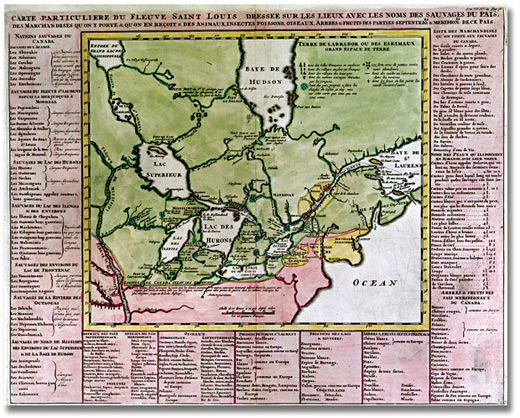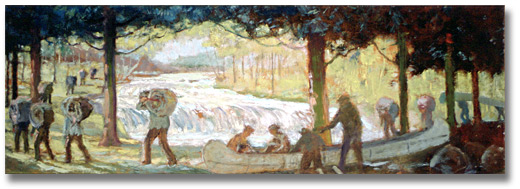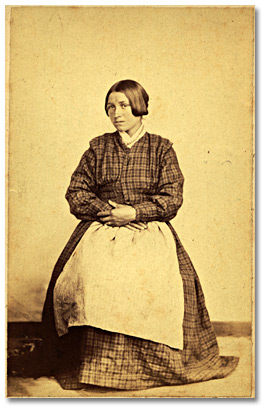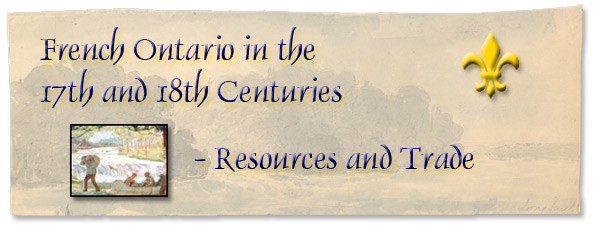
Table of Contents
Making Contact | Transitions | Resources and Trade
People, Places and Times | War and Defence | To Learn More
Natural resources were essential to the economic survival of New France, and the main reason for France’s interest in its North American possessions. Trade was the lifeblood of the colony. The rich potential of the colony was expressed by prominent settler Pierre Boucher, in 1663.
|
|
||||||||
|
|
|||||||||
New France’s main export was fur, mainly beaver, from the interior. At first, trade took place at posts on the St. Lawrence River (Tadoussac, Quebec, Trois-Rivières and Montreal). This changed gradually and, by the mid-18th century, merchants from Montreal took goods to the interior and traded for furs which they sold to companies (monopolies during most of the French regime) that would ship them to Europe. The French controlled most of the fur trade at that time, with less than 40% of the fur being shipped through English posts. First Nations exchanged pelts for European goods such as metal utensils and tools, wool blankets, alcohol and firearms. |
|||||||||
|
|
| ||||||||
The images above show some of the objects used to trade for furs. The list below, by the Baron de Lahontan, lists goods traded by French and First Nations. |
|||||||||
|
|||||||||
|
This map by Henri Châtelain showed not only the interior of the continent, but also listed some of its resources and local populations. |
|||||||||
|
|||||||||
|
|
|||||||||
|
Bringing European merchandise to the First Nations and taking the furs back to Montreal was the job of the voyageurs, men hired for their capacity to travel long distance and carry heavy loads. Their task was harsh: paddle for twelve hours or more a day on lakes and rivers leading to the interior and carry the merchandise on their backs up and down portages (paths between waterways). It would take them two months to travel from Montreal to the trading post at Michilimakinac (near Sault Ste. Marie). |
|||||||||
|
|||||||||
|
The coureurs des bois (literally, “wood runners”) were the adventurers of New France. Their illicit trade with First Nations and English traders made them outlaws in the eyes of the colonial government. |
|||||||||
|
|||||||||
|
Religious authorities condemned their traffic in alcohol, as well as their living like aboriginals. Colonial authorities used various methods to solve the problems created by the coureurs des bois. |
|||||||||
These included granting local trade monopolies to fort commanders, “congés”, and punishment ranging from heavy fines or confiscation of traded goods to jail. Such measures limited the number of coureurs des bois, but did not cause their disappearance. Eventually, the coureur des bois became a symbol of free and adventurous life. Descendants of coureurs des bois and First Nations women became a new nation, the Métis. Janet Woppumnaweskum, Metis woman |
|
||||||||
|
Previous | Home | Next |
|||||||||
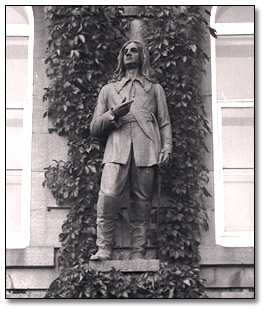

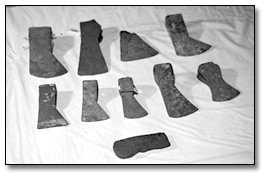
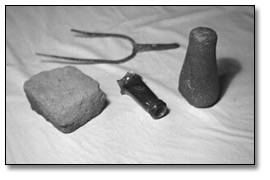
![List of traded goods - [Page 69]](pics/90674_69_130.jpg)
![List of traded goods - [Page 70]](pics/90674_70_130.jpg)
![List of traded goods - [Page 71]](pics/90674_71_130.jpg)
![List of traded goods - [Page 72]](pics/90674_72_130.jpg)
